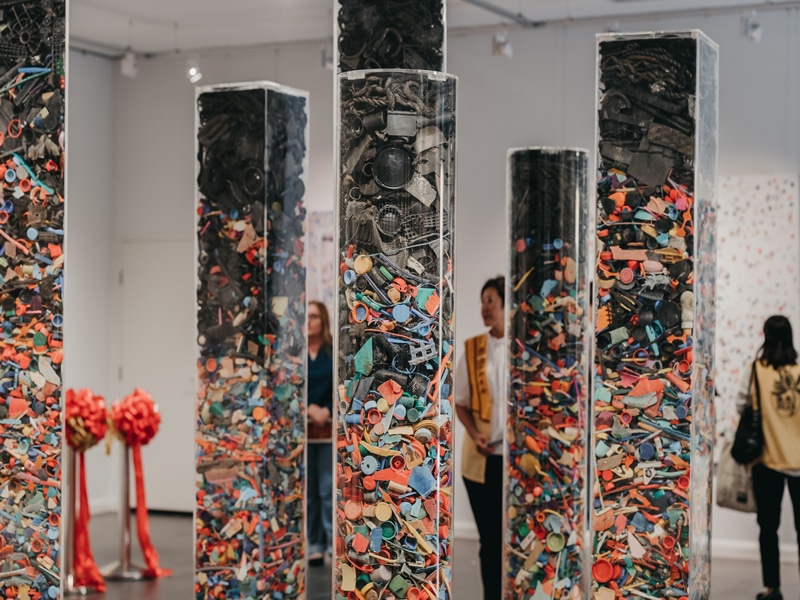
I have actively harvested from ‘nature’ the many- times-removed products of human manufacture: the raw material extracted from the earth, processed into commodity, used, discarded, and returned by the tide to human use.
The objects yielded by the tide prompted a key question for me: how does one give form to the formlessness of detritus? I was well aware that the organising principles and my choices would determine the meaning of any work created. I began by sorting the found objects into material, natural or manufactured, then into colour and size, his process a self-reflexive examination of categorization. These categories suggested particular works: totem poles constructed from buoys or thongs, wall-based collages of driftwood, and, eventually, coloured plastics assembled into abstract fields that came to evoke landscapes. Unlike most environmental artists, I made my work not from conventionally ‘natural’ materials — soil, grass, stones, for instance — but rather from the ‘artificial’ materials that nature has reclaimed and sculpted through erosion. My work actively mobilises the unstable boundaries between what is human-made and what is natural.
These works not only transform rubbish into objects of value, raising questions about the assignation of cultural worth. They also compel the viewer to make links between the cycles of production and use of everyday functional objects, and those of art. What distinguishes a piece of plastic ground to crystal-like translucency by time and water, from a work of art?
Can art shift our thinking on matters of sustainability, or is it complicit in the exploitation of the earth’s resources for human consumption?
